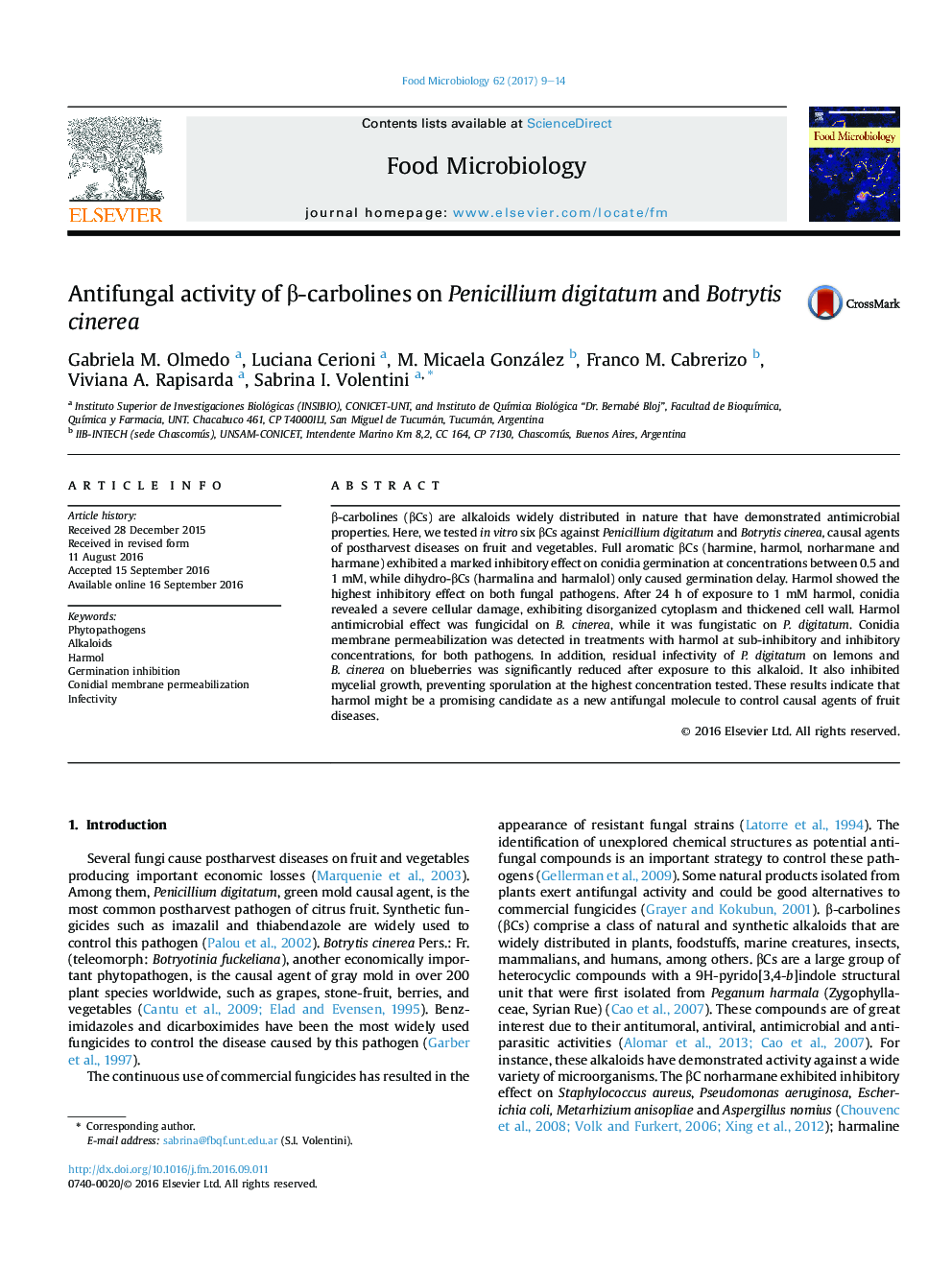| کد مقاله | کد نشریه | سال انتشار | مقاله انگلیسی | نسخه تمام متن |
|---|---|---|---|---|
| 4362526 | 1616239 | 2017 | 6 صفحه PDF | دانلود رایگان |
• Full aromatic β-carbolines have inhibitory effect on P. digitatum and B. cinerea.
• The β-carboline harmol has the highest inhibitory effect.
• Harmol causes membrane permeabilization and cellular damage.
• Fungi infectivity on fruit is significantly reduced after exposure to harmol.
β-carbolines (βCs) are alkaloids widely distributed in nature that have demonstrated antimicrobial properties. Here, we tested in vitro six βCs against Penicillium digitatum and Botrytis cinerea, causal agents of postharvest diseases on fruit and vegetables. Full aromatic βCs (harmine, harmol, norharmane and harmane) exhibited a marked inhibitory effect on conidia germination at concentrations between 0.5 and 1 mM, while dihydro-βCs (harmalina and harmalol) only caused germination delay. Harmol showed the highest inhibitory effect on both fungal pathogens. After 24 h of exposure to 1 mM harmol, conidia revealed a severe cellular damage, exhibiting disorganized cytoplasm and thickened cell wall. Harmol antimicrobial effect was fungicidal on B. cinerea, while it was fungistatic on P. digitatum. Conidia membrane permeabilization was detected in treatments with harmol at sub-inhibitory and inhibitory concentrations, for both pathogens. In addition, residual infectivity of P. digitatum on lemons and B. cinerea on blueberries was significantly reduced after exposure to this alkaloid. It also inhibited mycelial growth, preventing sporulation at the highest concentration tested. These results indicate that harmol might be a promising candidate as a new antifungal molecule to control causal agents of fruit diseases.
Journal: Food Microbiology - Volume 62, April 2017, Pages 9–14
